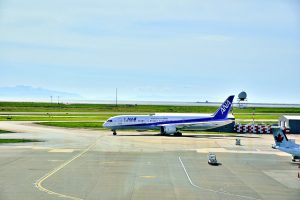 Taxiing is an important process for nearly all airplanes. From small and medium-sized airliners to large wide-body airliners, most airplanes require taxiing while on the runway. Before taking off and after landing, for example, airplanes must taxied. What is airplane taxiing exactly, and how does it work?
Taxiing is an important process for nearly all airplanes. From small and medium-sized airliners to large wide-body airliners, most airplanes require taxiing while on the runway. Before taking off and after landing, for example, airplanes must taxied. What is airplane taxiing exactly, and how does it work?
Overview of Airplane Taxiing
Taxiing refers to the movement of an airplane while on the runway. At any given moment, there are 5,000 to 10,000 commercial airplanes in the skies over the United States. As these airplanes transport passengers to their intended destination, they must land at an airport. Airports, of course, only have a limited amount of runway space. Therefore, airplanes must be taxied off the runway after landing so that they won’t block or otherwise prevent other airplanes from using the same airport.
Taxiing is simply the process of moving an airplane while it’s on the runway. It occurs after an airplane has landed, and it occurs before an airplane takes off. Airplanes don’t actually fly while on the ground. As a result, the process by which they move on the runway isn’t known as flying; it’s known as taxiing.
How Taxiing Works
There are different ways that airplanes can be taxied. Taxiing is most commonly performed using an airplane’s own propulsion system. For propulsion, most airplanes have either jet engines or propellers. Engaging the propulsion system allows airplanes to move while on the runway.
Some airplanes also have thrust reversers. Thrust reversers live up to their namesake by changing the direction of an airplane’s thrust. In jet-engine airplanes, thrust reversers can assist with taxiing. It essentially allows airplanes to back up while on the runway.
Pilots must still steer airplanes when taxiing them on. Steering is performed using the same control systems as flying an airplane. Pilots can turn the nose wheel or rudder to change the direction in which their airplanes travel while on the runway.
Taxiing vs Towing
It’s important to note that taxiing isn’t the same as towing. When many people hear the word “taxiing,” they envision a ground vehicle physically moving an airplane on the runway. Taxiing, though, specifically involves the use of an airplane’s own propulsion system to move while on the runway. Towing, on the other hand, refers to the use of a ground vehicle. Known as a tug, these ground vehicles connect to airplanes so that they can move and turn airplanes.



